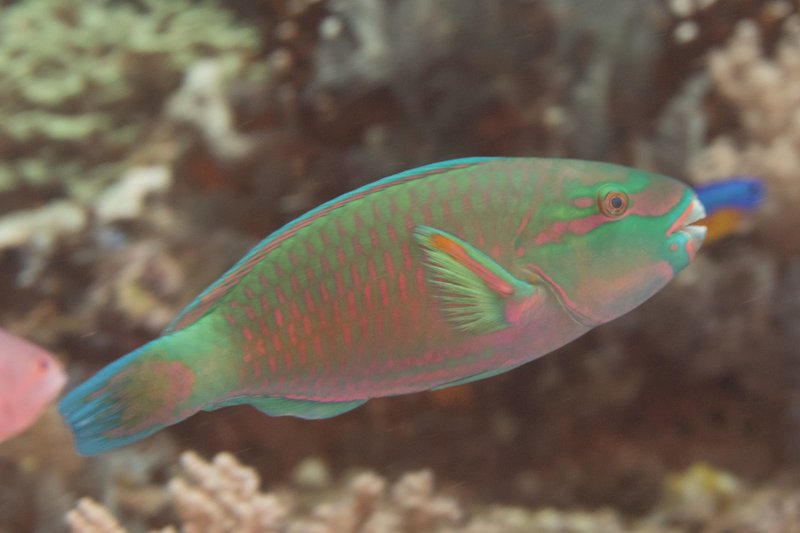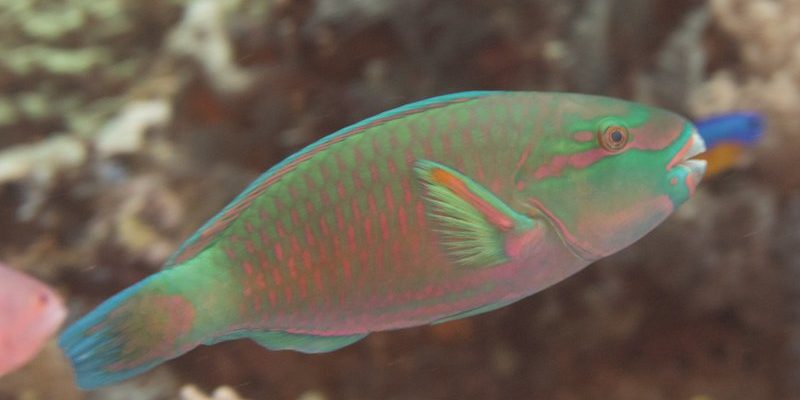
When you think of vibrant colors in the ocean, parrotfish likely spring to mind. With their bright scales and unique beak-like mouths, these fish are as fascinating as they are beautiful. Found in tropical waters around the world, they play a crucial role in maintaining the health of coral reefs. If you’ve ever snorkeled or scuba-dived in a coral reef, you may have spotted these captivating creatures munching away on algae and coral, seemingly fearless of humans. So, what exactly makes parrotfish so special?
Imagine walking through a lush, colorful garden filled with all kinds of flowers. Just like how different plants contribute to a garden’s beauty, parrotfish are like the gardeners of the ocean. They not only help the reefs flourish but also create sandy beaches by chewing through coral. Yes, you read that right! In this article, we’ll dive deep into the world of parrotfish, exploring their fascinating traits, behaviors, and the important roles they play in marine environments.
Physical Characteristics
Parrotfish are known for their stunning array of colors, which can range from vibrant greens and blues to soft pinks and yellows. These colors help them blend into the colorful coral reefs where they live, providing both beauty and protection from predators. But their appearance isn’t the only remarkable thing about them. One of their most distinctive features is their beak-like teeth, which resemble a parrot’s beak—hence the name. These teeth are perfect for scraping algae off coral, allowing them to enjoy a diet primarily made up of algae and small invertebrates.
In terms of size, parrotfish vary significantly depending on the species. Some can grow to be just a few inches long, while others, like the green parrotfish, can reach lengths of up to four feet! Like many fish, parrotfish also undergo changes as they mature. Most begin their lives as females, with some transitioning to males later on. This fascinating process ensures a balanced population within their habitats.
Habitat and Distribution
Parrotfish are typically found in shallow, tropical waters, particularly in coral reefs. They thrive in warm, clear waters, where they can easily access their food sources. The reefs provide not only food but also a safe haven from larger predators. You might find them in places like the Caribbean, the Great Barrier Reef, and other parts of the Indo-Pacific region. Within these habitats, parrotfish prefer areas with lots of coral, as this is where they can find plenty of algae to eat.
Interestingly, parrotfish not only inhabit areas rich in coral but also have the unique ability to help shape their environment. As they eat algae and coral, they contribute to the maintenance of the reef’s health, preventing algae overgrowth that could suffocate corals. Think of them as nature’s little caretakers, keeping the underwater gardens well-tended.
Diet and Feeding Behavior
What do parrotfish eat? The answer is simple: they love algae! However, their diet isn’t as straightforward as just munching on the green stuff. Parrotfish are known to consume coral, which may come as a surprise to many. They use their strong beak-like teeth to scrape up algae, but they also end up ingesting bits of coral in the process. This is not only a source of calcium for them but also a way to keep the reef healthy.
The feeding behavior of parrotfish is quite remarkable. They spend a significant part of their day grazing on the reef, often making a loud noise while they eat—almost like a little underwater vacuum. This behavior plays a critical role in the reef ecosystem, as removing excess algae prevents it from overtaking more delicate coral structures. By controlling algae growth, parrotfish help ensure a balanced and diverse marine environment.
Reproduction and Lifespan
Reproduction in parrotfish is quite unique. Most species are protandrous hermaphrodites, meaning they start their lives as females and can later change to males. This fascinating trait allows for better reproductive success in populations where male fish are fewer. During the breeding season, males will establish a territory and perform courtship displays to attract females. Once paired, they engage in synchronized swimming and perform elaborate dances to entice their partner.
When it comes to lifespan, parrotfish generally live for around 5 to 7 years in the wild, though some species can live much longer under ideal conditions. Their longevity can be impacted by environmental factors, such as habitat destruction and climate change, making it vital to protect their ecosystems. These beautiful creatures are not just temporary residents of the ocean; they play a long-term role in the health and sustainability of marine life.
Environmental Importance
The role of parrotfish in coral reef ecosystems cannot be overstated. As they graze on algae, they keep it in check, allowing coral to thrive. Without parrotfish, excessive algae growth could dominate a reef, leading to a decline in coral health and biodiversity. This delicate balance is crucial for the overall health of the ocean, as reefs provide habitat for many marine species and contribute to coastal protection.
Moreover, parrotfish contribute to the formation of sandy beaches. The bits of coral they chew turn into sand, which eventually washes ashore. So, every time you walk on the beach, you might just be stepping on ground that was once part of a coral reef, thanks to our hard-working friends, the parrotfish! Protecting their habitat and ensuring a healthy population of parrotfish is vital for maintaining not only the reefs but also the beautiful beaches we love.
Threats to Parrotfish Populations
Despite their importance, parrotfish face several threats that put their populations at risk. One of the most significant dangers is habitat destruction, largely due to human activities such as coastal development, pollution, and climate change. Coral reefs are incredibly sensitive environments, and disturbances can have devastating effects on the marine life that depends on them.
Overfishing is another major concern. In some regions, parrotfish are caught for food or kept in aquariums, leading to a decline in their numbers. As their populations diminish, the balance of the reef is disrupted, impacting not just parrotfish but many other species that share their habitat. Conservation efforts are crucial to ensure these vibrant fish thrive in the future. This can involve protecting coral habitats, regulating fishing practices, and raising awareness about their ecological importance.
Conservation Efforts
To ensure the survival of parrotfish, various conservation initiatives are underway globally. Marine protected areas (MPAs) have been established in numerous locations, creating safe havens for parrotfish and other marine life. These zones help restore the balance of ecosystems by allowing fish populations to rebound, giving coral reefs a fighting chance against degradation.
In addition to creating protected areas, educating communities about the importance of parrotfish and their role in the ecosystem can help foster a sense of stewardship. In many regions, local populations are encouraged to participate in conservation efforts through sustainable fishing practices and reef rehabilitation projects. The more we understand and appreciate these colorful fish, the better equipped we are to protect them.
Interesting Facts About Parrotfish
| Size: | Up to 4 feet depending on species |
| Diet: | Algae and coral |
| Habitat: | Tropical coral reefs |
| Lifespan: | 5 to 7 years |
| Coloration: | Bright, vibrant colors |
| Reproduction: | Protandrous hermaphrodites |
| Noise: | Can make loud chomping sounds while feeding |
In summary, parrotfish are more than just beautiful fish swimming along the coral reefs; they are essential players in maintaining the health of marine ecosystems. Their unique feeding habits, colorful appearances, and beneficial roles make them a vital part of ocean life. By understanding their importance, we can take steps to protect their habitats and ensure future generations can enjoy the sights of these magnificent creatures. Let’s celebrate and safeguard the parrotfish, the unsung heroes of our underwater gardens!
FAQ
What is the main diet of parrotfish?
Parrotfish primarily eat algae and coral. Their beak-like teeth allow them to scrape algae off the coral surface effectively. Interestingly, as they consume algae, they also ingest bits of coral, which provides them with essential calcium. This unique diet helps them thrive in their coral reef environments while also playing a crucial role in keeping the reefs healthy.
How do parrotfish reproduce?
Parrotfish have a fascinating reproductive strategy. Most species start life as females and can later change into males, a process known as protandrous hermaphroditism. During mating season, the males establish territories to attract females, performing elaborate dances and synchronized swimming displays to woo their partners. This reproductive adaptability helps ensure a balanced population.
Are parrotfish endangered?
While parrotfish are not currently classified as endangered, they face significant threats from habitat destruction, climate change, and overfishing. Coral reefs, their primary habitat, are under siege from pollution and coastal development. Conservation initiatives, such as creating marine protected areas and promoting sustainable fishing, are crucial to preserving their populations for the future.
How long do parrotfish typically live?
Parrotfish generally have a lifespan of around 5 to 7 years, although this can vary by species. Certain species can live much longer, depending on environmental conditions and threats. Their longevity is vital for maintaining their populations and the health of the reefs they inhabit.
What impact do parrotfish have on coral reefs?
The role of parrotfish in coral reefs is incredibly beneficial. By grazing on algae, they help prevent overgrowth that could smother corals, thus promoting a balanced ecosystem. Additionally, as they consume coral, they contribute to the formation of sandy beaches, illustrating their multifaceted role in marine environments.
Can parrotfish change their color?
Yes, parrotfish can change color during certain times, especially during mating season or when threatened. Their coloration helps them blend into their environment, providing camouflage from predators. This ability to change color adds to their beauty and adaptability in the vibrant coral reef ecosystems.
What should I do if I see a parrotfish while snorkeling?
If you spot a parrotfish while snorkeling, take a moment to appreciate its beauty. Remember to keep a respectful distance so as not to disturb them, and avoid touching or chasing them. Observing them in their natural habitat is a wonderful experience, and maintaining a safe distance helps protect both you and the fish.
Are parrotfish solitary or social animals?
Parrotfish can be both solitary and social, depending on the species and environmental conditions. Some live alone, while others form small groups, particularly during mating seasons. These social structures can help with protection against predators and enhance their chances of reproduction.
How do parrotfish contribute to climate resilience?
By maintaining the health of coral reefs, parrotfish play a vital role in climate resilience. Healthy reefs can better withstand stressors such as rising sea temperatures and ocean acidification. By ensuring parrotfish populations thrive, we can help sustain the coral ecosystem that provides benefits not just to marine life but also to coastal communities and overall ocean health.
What are some threats to coral reefs associated with parrotfish?
While parrotfish are essential for coral reef ecosystems, their populations can be impacted by factors like overfishing and habitat loss. In some areas, excessive fishing pressures can lead to reduced numbers of parrotfish, which could compromise the health of the coral reefs they help maintain. Protecting their habitats is crucial for their populations and the overall integrity of marine environments.
Can I keep a parrotfish in an aquarium?
Yes, parrotfish can be kept in aquariums, but they require large tanks due to their size and need for swimming space. They also need specific water conditions and a diet that mimics their natural feeding habits to thrive. It’s essential to do thorough research and ensure you can provide the right environment before considering one for your aquarium.

